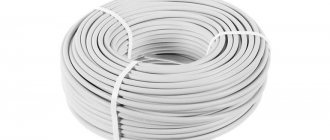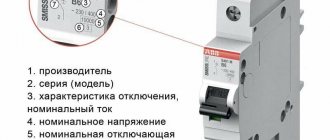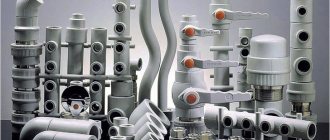The refrigeration unit occupies perhaps the most honorable place in any kitchen. Without it, it is impossible to store food and prepared dishes for a long time. During continuous operation, equipment constantly wastes energy. The power consumption of the refrigerator will tell us about its consumption. Agree: this is one of the important selection criteria.
We will tell you how to find an economical model and what characteristics you should pay attention to. Our proposed article provides selection rules and lists external factors affecting energy consumption. To make your search easier, we present a rating of models with the “least appetite.”
Main energy consumption classes
Back in the 90s, all modern household appliances began to be divided according to the newly introduced energy consumption classification. This equally applies to both miniature light sources and large water heating tanks and washing units.
Now labeling indicating the class inherent in a particular device is mandatory.
On average, annual electricity consumption in kilowatt-hours is in the range of 235-465 kW. Knowing the parameter, calculating the approximate daily or monthly figures is not difficult.
To do this, it is enough to divide the declared value by the number of days/months in a year - 365/12. For example, if a device consumes 230 kW/h annually, then the daily rate is approximately 0.63 kW/h. Monthly calculations are carried out using a similar principle.
Consumption classes are designated in Latin letters in the range from A to G. Each of them is assigned a color graphic indicator for a more understandable perception. Some designations are supplemented with the index “+”.
The gradation is determined by dividing the actual amount of consumption by the standard indicator. The first figure is established during experiments.
The second is obtained as a result of calculations using a complex formula, which involves many components - volumes of departments, temperature, technologies used, climate class, etc. Information is provided to the user in the form of a percentage of energy consumed for a specific time period to specified standards.,
- manufacturer's name;
- model;
- energy efficiency class;
- amount of energy consumed per year;
- total usable volume;
- useful volume of the freezer compartment;
- markings reflecting the temperature conditions of the freezer;
- noise level.
The ABC of energy consumption of refrigerators looks like this:
| Energy category | Characteristic | Energy efficiency index |
| A+++ | Level A technology saves up to 50% of electrical energy. | Less than 22 |
| A++ | 22-33 | |
| A+ | 33-44 | |
| A | Class A and B equipment saves about 35% of kilowatt hours. | 44-55 |
| B | 55-75 | |
| C | The economy of these classes is at an average level. | 75-95 |
| D | 95-110 | |
| E | Uneconomical technology. It has been out of production and not on the market for a long time. | 110-125 |
| F | 125-150 | |
| G | Above 150 |
The most economical and rational equipment is considered to be category A with a green indicator of different shades, the most expensive is G, marked in red. Units A+, A++, A+++ consume three times less than generally accepted standards.
Devices below class C are practically no longer produced, as they are malicious wasters of light. The energy consumption of such refrigerators is from 110 to 150%. These values are far from the norm and can cost a pretty penny.
The average option in terms of energy consumption includes equipment marked B and C. It saves approximately 15 to 35% of resources.
The difference between refrigerators classified into different classification categories can be quite significant. A type A++ unit requires only 143 kWh per year, while its fellow G consumes more than 900 kWh over the same period.
The A+++ models, which are 50% more economical than even equipment that has an A+ class, will help you save your family budget. It is quite natural that they cost an order of magnitude higher, but the subsequent savings will soon pay for the investment in the purchase with interest.
Tips for saving energy
In order to save energy with your refrigerator, you can use the following tips:
- Do not defrost the refrigerator! Defrosting refrigerators occurs automatically and significantly extends the service life of the device. If you need to defrost the refrigerator, you need to do it very carefully.
- Use energy-saving lamps and diodes. These lamps not only save energy, but also reduce the noise level when the refrigerator operates.
- Set the thermostat to the minimum temperature value.
- Use double door seals. This will help keep the refrigerator warm.
- Install a compressor with an auto-restart function, which will reduce energy consumption. The refrigerator will begin to work again in the mode in which it was turned off.
- Use the Vacation feature more often.
- Turn off the automatic defrost function.
Power of household refrigeration units and what it depends on
The power of a household refrigerator is the amount of electrical energy it consumes during operation. It is measured in watts (W).
Power depends:
- on the volume of the refrigerating chamber;
- freezer volume;
- quantity and power of the compressor (equipment with one compressor is more economical than two-compressor);
- additional components (heaters, fans, lighting, etc.);
- additional functions in technology, for example, No Frost;
- seal quality;
- ambient temperature (in warm weather, more electricity is consumed).
The power also depends on the correct use of the refrigerator. Opening the door frequently uses more energy. Its amount increases due to ice in the freezer, overload of food, and the temperature of the food placed in the refrigerator.
The instructions for the equipment indicate the average (nominal) power - around 250 W. In reality, the figure can exceed 500 W. A significant share of energy consumption is the compressor power. The power consumption of the refrigerator is indicated on a sticker located on the door or inside the unit.
To obtain the average power indicator, it is determined how much electricity in kilowatts the refrigerator consumes per day. A multimeter is used for measurements. They measure the circuit readings while the refrigerator motor is running. The resulting value is multiplied by 220 volts (the value of the mains voltage). Since when the compressor starts, a current passes through the circuit, which is 2-3 times higher than the rated value, the readings obtained are multiplied by three.
The manual, in addition to the average rated power, indicates the maximum power of the refrigerator in kW. How many kW does the refrigerator use per hour according to standards? Values for maximum power are 0.3 kW/h, for average power are from 0.1 to 0.2 kW/h.
Freezing power is measured in kg/day. In the instruction manual and on the sticker, this parameter is marked with an “X” or three asterisks (***). Freezing power varies depending on the model of refrigeration unit. For example, Atlant and Bosch are able to cope with 20-22 kg of products in 24 hours, with 17 kg, and Indesit with 30 kg.
How to choose an economical model of a cooling device
When choosing an economical model of a household appliance, calculating only the annual energy consumption of the device will not be enough.
The following criteria must be taken into account:
- Compressor power
- Availability of a cooling system
- Tightness and tightness of closing doors
- The presence of additional functions - this could be the NoFrost system, built-in Vi-Fi or TV, water cooling function, etc.
- Number of cameras and their volume
It is important to know that additional device options increase its energy consumption. If you need to choose a cooling device with low power consumption, then choose a household appliance without these functions.
Compressor
Today, there are models of household appliances with one or two compressors on sale. It is important to understand that the number of compressors also determines how many watts the refrigerator consumes.
A refrigerator with two compressors is usually equipped with more functions, a thermostat and more intense air injection.
A device with one compressor is more economical. The power consumption of such a refrigerator is lower.
Of the compressors themselves, the inverter type is considered the most successful. Such a compressor can easily cope with lowering temperatures. It also works for a long time without breakdowns. If you ask yourself how many watts a refrigerator with an inverter compressor consumes, you can understand that the consumption is small. A classic or stepped motor increases the average power of the cooling device. This is due to the fact that when pumping air, such a device uses full power.
Cooling system
The cooling system is a technical indicator on which the quality of preservation of refrigerated products directly depends.
There are three cooling system options. The first option is NoFrost. And the second option is a static system. The third option is a dynamic cooling system.
The NoFrost cooling system works in such a way that ice and condensation do not form on the walls. This is due to the fact that this system uses the dry freezing method. Evaporation channels are installed above or behind the freezer. Condensation flows down to the pan. Then it evaporates there. Therefore, there is no need to defrost the refrigerator. A household appliance with this cooling system is considered the most efficient. This device cools food evenly and keeps it fresh longer.
With a static cooling system, evaporating water flows in drops along the back wall of the refrigerator into a special tray. This cooling option is also called drip cooling. A device with this cooling system must be defrosted twice a year.
The dynamic cooling system is an improved version of the static system. But when this system operates, the air in the chambers of the device circulates constantly. Accordingly, frost does not form on the walls. There are also no thermal zones inside the refrigerator.
Remember that the cooling system determines how many watts the refrigerator consumes. The static system is considered more economical and reliable.
There are devices that have two cooling systems installed. These two systems comprehensively cope with the cooling process of the device. How much energy such a refrigerator consumes can be seen on the sticker inside the refrigerator.
Volume and number of chambers
The number of cameras directly depends on the size of the family and living space. If the family is large and the space allows, then it is more advisable to purchase a refrigerator with two or three chambers. For a small family with a small kitchen, a household appliance with one chamber will be enough.
How much electricity a refrigerator consumes depends on the number of freezers. Therefore, these parameters are very important to consider when purchasing a cooling device.
Tightness
For proper economical operation of the refrigerator, its tightness is very important. Tightness means the absence of sources of cold air outlet. How much electricity does a household appliance consume with poor thermal insulation and poor quality sealing rubber? It is important to understand that a leaking device causes the refrigerator compressor to run constantly in the on mode. Therefore, the energy costs of such a household appliance are much higher. When taking this parameter into account when choosing a device, it is better to choose well-known and reliable brands. Such manufacturers install high-quality seals and ensure reliable sealing of the device. A low-cost refrigerator with poor sealing will end up costing more. This is due to the short service life and the need to repair the device.
To prevent these problems, it is necessary to regularly monitor the sealing rubber of the refrigeration device. When it gets dirty, a greasy coating forms on it, which prevents the door from closing tightly. To prevent this situation, the sealing rubber must be washed regularly and its cleanliness monitored.
How much electricity does a refrigerator consume per month?
The average electrical energy consumption per year in kilowatt-hours is in the range of 235-465 kilowatts (kW). Knowing this indicator, they calculate how many kilowatts the refrigerator consumes in one month or per knock. To do this, electricity consumption per year is divided by the number of months (12) or by the number of days in a year (365).
So, if the annual consumption of the refrigerator is 270 kW/h, then:
- monthly consumption - 270/12=22.5 kW/h;
- daily indicator - 270/365 = 0.74 kW/h.
By multiplying the results obtained by the electricity tariff, the estimated monetary costs are calculated. This indicator is conditional and will change in reality. The instruction manual usually indicates an indicator that is obtained at a standard ambient temperature (about 22°C). In summer, at higher temperatures, electrical energy consumption increases.
Affects the amount of energy consumed and the workload of the refrigerator. The greater the mass of placed products, the higher the electricity costs will be.
Compressor refrigerator calculations
The minimum average power of a compressor refrigerator ranges from 100 to 200 W/hour, and 300 W/hour is the maximum, that is, the average is about 250 W/hour.
In 1 minute the refrigerator consumes 4.17 W: (250 W / 60 minutes). This is under normal conditions, the temperature in the refrigerator compartment should not fall below +5°C, and the temperature in the room should not exceed +25°C.
But since the refrigerator does not work all day, but only when the temperature drops, in about a day the device consumes a minimum of 1.5 kW, a maximum of 3.5 kW, and an average value of 2.5 kW per day.
This comes out to 75 kW per month: 2.5 (consumption per day) * 30 (days in a month).
Depending on the region, electricity tariffs may differ, so we take an approximate value of 3.75 rubles. for 1 kW/hour, multiplied by monthly consumption: 3.75*75=281.25 rub.
Based on calculations, for using a refrigerator with a power of 250 W per month you will need to pay 281.25 rubles.
For absorption refrigerator
The normal minimum power is 75 W, and the maximum is 200 W, with an average value of 135 W/hour.
Consumption in 1 minute: 135/60=2.25 W.
Approximately 0.85-1.5 kW per day comes out, we take 1.2 kW per day.
Consumption per month: 1.2*30=36 kW.
Payment amount: 36*3.75=135 rub.
Car refrigerators
Also, car refrigerators have recently gained great popularity. They are small in size and have low power, which makes them possible to use during trips and travel.
The average power of such a refrigerator is 45 W/hour.
For one minute of operation, the power consumption is 0.75 W: 45/60 minutes.
During the day it consumes about 360 W.
This comes out to 10.8 kW per month: 360*30 = 10800 W.
Payment amount: 10.8 * 3.75 (for example, the tariff for 1 kW/hour, there are different tariffs in each region, district, city and village) = 40.5 rubles.
Due to their small volume and good thermal insulation, they consume little electricity, but they are not suitable for home use due to their small capacity.
All they need is a connection to a car battery to maintain the cold inside the chamber.
Important! These calculations are made based on average statistical data and depending on the manufacturer’s model and the power consumption of the refrigerator, these values may vary.
Electricity consumption per month of refrigerators from different manufacturers
The design of modern household appliances is aimed at maximizing savings in consumed resources. They take into account not only the operating time and power of the equipment, but also the degree of load of the device, energy efficiency class, and the presence of additional functions.
Some brands of refrigeration equipment use a value in liters instead of a letter version of the energy capacity class designation. In this case, the calculation of consumed electrical energy is even simpler: take 1 kW per 1 liter of volume. So, for a refrigerator marked 250 liters, the consumption will be about 250 kW per year.
Lg refrigerators
New models of refrigeration equipment belong to the A++ energy efficiency class, which allows owners to save up to 38% compared to other types of refrigeration chambers. The equipment is equipped with an inverter linear compressor, thanks to which the refrigerator consumes electricity per hour from 25 to 32 W.
Liebherr refrigerators
Liebherr is a world-famous manufacturer of refrigeration and freezing equipment. The popularity of the products is due to high build quality, ease of use, combination of stylish design and reliability. The big advantage of the latest models is the economical power consumption of the refrigerator, which is less than 1 kW per day.
Refrigerators Biryusa
Biryusa - compact and functional refrigeration units of domestic production. Models available in various sizes and purposes. All units have a 3 year warranty. The latest line of equipment belongs to energy efficiency class A - an average-sized refrigerator consumes about 1000 watts per day.
Refrigerators Indesit
Indesit refrigeration equipment is distinguished by a combination of stylish design, high build quality, and durability. All modern models can save up to 35% of electricity. For an average refrigerator, power consumption ranges from 260 to 330 kW/year.
Refrigerators Atlant
Atlant refrigeration equipment is in demand due to the reliability and versatility of its models. The range includes devices capable of freezing from 6 to 20 kg of food. At the same time, the electricity consumption of a refrigerator of average volume and functionality does not exceed 360-400 kW per year. The exception is models with No Frost technology (energy consumption increases significantly).
Bosch refrigerators
Bosch is more productive than Samsung. The brand’s refrigerators freeze 22 kg per day. Power consumption of one of the Bosch KIS87AF30 two-chamber refrigerators:
per year – 226 kWh; per month – 19 kWh; per day – 0.62 kWh.
Other refrigerators
Annual power consumption of other popular brands of refrigerators using the example of individual models:
- Siemens KG39NXB35 – 237 kWh;
- Hotpoint-Ariston HFP 8202 WOS – 244 kWh.
All of the listed models are A++ and A+++ classes, therefore they are distinguished by the highest energy efficiency indicators.
How to calculate consumption
On average, a refrigerator consumes 200-600 kW per year, depending on power. For calculations at different time intervals, we took the average value of power consumption. Individual parameters can be viewed in the model passport - the annual consumption in kWh is indicated there.
In a year
We use data from the instruction manual. For example, a refrigerator consumes 340 kW per year. If the cost of 1 kW in the Moscow region is 5.47 rubles, we calculate using the formula: 340 * 5.47 = 1859 rubles / year.
Per day
We divide the annual volume by the number of months, and then by 30 - the average number of days in it: 340/12/30 = 0.9 kW. With the same electricity tariff we get 0.9*5.47=4.9 rubles/day.
In an hour
We calculate consumption per hour: 0.9/24=0.0375 kW. Then we calculate using the same formula: 0.0375*5.47=20 kopecks/hour.
Refrigerator electricity consumption per year
The refrigerator is plugged in all year round - it is the only household appliance that requires a continuous supply of electricity. The larger the refrigerator, the more air and food in the chamber needs to be cooled. Therefore, large devices consume a lot of electricity.
To determine how much light a refrigerator consumes, you need to know the technical parameters: maximum load current or peak power. This information is written on a sticker or on the back of the device.
If the technical documentation is lost, but you know what energy consumption class the refrigerator has, then you can calculate the estimated electricity consumption per year:
- category A - 125-300 kW/h;
- category B - 350-550 kW/h;
- categories C, D - 600-850 kW/h.
To calculate the money spent, you need to multiply the energy consumption indicator by the current tariff. An example calculation for an energy-saving unit of category A++ in Moscow looks like this:
135 kW/h × 5.38 rub. = 726 rub. 30 kopecks in year.
And a type B refrigerator will spend 2,700 rubles worth of electricity during the same time, with a difference of almost four times.
When only the load current of the device is known, you first need to calculate the power: multiply the voltage by the current. Example for a medium unit in category B:
0.9 amperes × 220 volts = 198 watts or ≈ 0.2 kW.
On average, the compressor runs a quarter of the time, which means electricity is consumed for six hours per day:
6 hours × 0.2 kW = 1.2 kW/h for 1 day.
Multiplied by the number of calendar days and the tariff, you get 438 kW/h annually or 2,356 rubles for the capital.
The calculations given are based on standard operating conditions. The device may consume more energy under the influence of external circumstances:
- placement near heating devices, stoves, radiators;
- wear of the rubber seal or door magnets;
- loading warm or hot products into the chamber;
- large temperature difference between the room and the chamber;
- clogging of the drainage system, accumulation of condensate;
- frequent or prolonged opening of doors;
- freezer overload.
These factors cause the compressor to start frequently, which increases energy costs. The volume of the chambers directly affects energy efficiency.
To minimize electricity consumption, you need to choose a class A model and take into account the dimensions. For a small family, a spacious refrigerator is not needed - empty compartments will waste energy. You can also change the incandescent light bulb inside the housing to a fluorescent or LED one. This will further reduce the power consumption of the electrical network.
To prevent the condenser from turning on less often, you should not install the refrigerator close to the walls. The engine will work less if you regularly monitor and eliminate freezing of walls, drainage blockages and damage to the rubber seal.
Calculation of costs based on the average tariff
We can assume that the average cost of electricity in the Russian Federation is from 4 to 5 rubles per 1 kW/h (for houses without electric stoves). Accordingly, if a refrigerator consumes about 300 kW/h of electricity per year, then the owner of the equipment will have to pay about 1,500 rubles annually.
In old refrigerators, produced about 10 - 20 years ago, consumption reaches up to 900 kW/h. Accordingly, when using such equipment, you will have to pay about 4,500 rubles annually.
The average daily electricity consumption ranges from 570 to 1280 W/h in 24 hours. You just need to take into account that the specified data refers to modern technology, which is operated at a temperature of about 20 degrees, with the average cooling mode turned on (5 degrees Celsius for the refrigerator compartment).
Rules for choosing an economical refrigerator
Despite all the markings and miscalculations, the fact that how much electricity the purchased refrigerator will consume is influenced by a lot of circumstances.
Some of them are hidden in the design and configuration, others depend directly on the user and on how favorable conditions he creates for the operation of the equipment.
The number of kilowatts consumed by a refrigerator per day, month or year is not calculated based solely on data from the technical passport. The parameters are also influenced by the filling that the manufacturer supplies its development with.
If you want to find the most economical device, you should first consider the following nuances:
- number and type of compressors;
- cooling system;
- chamber volume;
- tightness and thermal insulation;
- set of functionality.
Compressor. The range includes one- and two-compressor models of refrigeration units.
As a rule, versions with two motors are more convenient to use, since they provide more options for effective temperature control and defrosting.
When choosing equipment, you need to pay attention not only to the number, but also to the type of compressors. In terms of energy consumption, inverter models win by a significant margin. The operating mode of the inverter is different in that it instantly raises the temperature to the set values and constantly maintains it, smoothly changing the power.
A conventional compressor takes longer to reach the required levels, turns on at full power, and then turns off. As soon as the sensor detects temperature changes, the thermostat starts the mechanism again. This adjustment technique is called stepwise. In terms of saving electricity, it is imperfect.
Cooling system. Modern refrigeration units are equipped with two main cooling systems - drip or NoFrost. In devices with a drip system, the evaporator, which maintains a cold temperature, is located on the rear wall. Over time, the formed pieces of ice flow down in drops into the pan, where they evaporate.
The innovative NoFrost technology involves dry freezing, in which frost does not appear and ice does not freeze. The evaporator is built above the freezer compartment or behind the back of the unit. Products are frozen by blowing cold air, which is provided by fans.
Once every few hours the fan stops, at this time the heating component is turned on, the melted liquid is transferred through special grooves into the pan and evaporates. Such refrigerators do not require defrosting.
The “no frost” system includes several subtypes - Full No Frost, Total No Frost. There is also combined cooling, combining two main types. In terms of energy consumption, the traditional cooling system is more economical.
Due to the presence of additional fans and a powerful heater, NoFrost technology is more demanding on energy resources.
Number and size of cameras. As for the number of compartments, the best option for the consumer is two-chamber models. Single-chamber counterparts are not so “gluttonous”, but they are usually installed only in those rooms where space does not allow them to accommodate impressive dimensions.
The energy consumption index is also affected by the volume of refrigeration equipment: the larger it is, the more noticeable the consumption.
Tightness. Before purchasing a refrigerator, you need to check the quality of the seals and thermal insulation configurations of the body. Their lack of reliability is dangerous due to excessive loss of cooled air, which provokes an increased load on the compressor and, accordingly, increases energy costs.
Even the color of the product is reflected in the kilowatts consumed. It has been established that silver material has lower emissivity and releases heat more slowly.
What does energy consumption depend on?
Specifications
Power and number of compressors
The refrigerator works around the clock. The main part is the compressor. It is activated when the temperature rises above normal and turns off when it returns to acceptable levels.
The power of the refrigerator compressor affects operation in different modes. There are linear and inverter compressors. The former are much cheaper than the latter and are used more often. But the latter are more efficient due to a smooth change in power.
Most refrigerator models have 1 compressor. It regulates the temperature of the freezer and refrigerator compartments. To reduce power consumption, two-compressor models were developed. They consume less electricity due to different power in each chamber.
And one more of them can always be turned off if nothing is stored in one of the compartments.
Climate class
Climate class is an indicator of the temperature range in which the refrigerator can be used. There are the following categories and temperature range for each:
- N – normal. From +16 to +32 ℃;
- SN – subnormal. From +10 to +32 ℃;
- ST – subtropical. From +18 to +38 ℃;
- T – tropical. From +18 to +43 ℃.
In Russia, N and SN class models are mainly used. Multi-class hybrids with a wider temperature range are also gaining popularity: NT, N-ST, SN-ST and SN-T.
Cooling system
The compressor is not the only possible cooling mechanism. There are also absorption systems. The refrigerant circulates due to the operation of the heat exchanger. In this case, energy consumption increases significantly.
With the thermoelectric type of cooling, the Peltier effect is triggered. Heat transfer is carried out by direct electric current.
Such a system is mainly used in small appliances, because the larger the refrigerator chamber, the higher the electricity consumption.
The last type, the vortex type, did not go beyond testing due to strong noise and low performance. In this system, the air, after being compressed by the compressor, expanded in a special chamber.
Volume and number of chambers
The main guideline in choosing the dimensions of the refrigerator and the number of chambers is the size of the kitchen. For most families, two-chamber models with a capacity of 250-400 liters and a separate freezer are suitable. A single-compartment refrigerator is ideal for a small kitchen. It is easy to “hide” it in the cabinet under the table top. The more chambers and volume, the higher the energy consumption.
Freezing speed
The built-in accelerated freezing mode will quickly cool food to the required temperature, but will also affect the amount of electricity consumed.
Third party factors
The increase in electricity bills is influenced not only by the technical characteristics of the refrigerator, but also by a number of household factors.
Tightness
Tightness is also an important element of energy saving. High-quality seals on the doors and high thermal insulation of the housing prevent air from penetrating into the chambers. In this case, the compressor works less intensively, which reduces the load and reduces electricity consumption.
Set temperature
The temperature, which is set on a mechanical regulator or electronic panel, also affects the intensity of operation of the refrigerator. The lower it is, the more resources the equipment needs to cool the products to the required level.
Camera workload
In order for the equipment to work correctly, without a sharp increase in loads, it is important not to load the cameras. It is best to distribute food evenly on the shelves so that cold air circulates evenly inside.
Timely service
Timely defrosting is the key to proper operation of the equipment. In models that do not have a melted ice removal system, an ice crust may form. This effect negatively affects the heat transfer properties of the refrigerator, increasing energy consumption.
Door opening frequency
The more often the door is opened, the more air enters the refrigerator. The temperature inside is rising and emergency cooling is required. Like sealing, this also increases the load on the compressor.
The influence of external factors on energy consumption
To achieve high-quality operation in the maximum possible economy mode, any refrigerator must provide the necessary conditions. Manufacturers indicate most of them in the instructions that come with the product.
In general, energy consumption will depend on:
- air temperature in the room where the device is installed;
- the degree of food load in the working chambers;
- door closing/opening frequencies;
- timely defrosting.
Ambient temperature is one of the leading criteria. In the process of research and scientific experiments, it has been proven that refrigerators operating in rooms where average readings of 16-17 degrees Celsius are recorded save the budget by approximately 1.5 times.
This does not mean that the equipment can be installed in critically cold environments. Under such conditions, the compressor simply will not turn on or, worse, will fail altogether.
Loading of cameras. Before filling the refrigerator with food, you should study the technical parameters and manufacturer’s recommendations in this regard. You should never load it to capacity.
It is also worth distributing provisions evenly across shelves and departments, otherwise air circulation will be difficult, which is also not the least important for energy consumption.
Defrosting. If the refrigerator is not equipped with an automatic system, do not forget about regular self-defrosting.
Exploitation. If the unit door is opened frequently, the load on the motor immediately increases. This is due to the fact that the cooled air accumulated inside quickly escapes outside. Accordingly, to make up for losses, the device begins to work at maximum power, increasing electricity costs.
Freezing productivity
All Atlant refrigerators are designed to solve various problems. One of the main parameters that you need to pay attention to is the freezing power. This indicator directly depends on the volume of the freezer chamber and the productivity of the compressor. Thus, various modifications of Atlant refrigerators can freeze from 6-10 kg (No Frost system and household models) to more than 20 kg of food.
It should be noted that for a small family this value should not exceed more than 8-9 kg, since the use of more powerful characteristics will lead to an increase in power and consumption of a large amount of energy.
Energy consumption of refrigerators in comparison with other equipment
Despite the fact that the refrigerator is constantly connected to the network, it does not have a strong impact on the total amount of electricity consumed. Of course, he takes a lot, but there are appliances in the house that consume much more.
The most expensive option is to use electric heaters. Air conditioning systems are also considered costly, regardless of whether they are set for cooling or heating. The top three is completed by an electric stove if it is regularly used for cooking.
But even in the absence of the above-mentioned appliances in the house, the refrigerator will still not take a leading position in energy consumption. Typically, you have to pay more for lighting, especially if incandescent bulbs are not replaced by more energy-efficient LEDs.
It is curious that even a personal computer and old types of televisions with picture tubes can outpace a refrigerator in terms of energy consumption. A washing machine, plasma TV, electric kettle, vacuum cleaner, microwave oven, and iron consume less cooling chamber. But, in any case, it is unlikely that you will be able to save money by not installing a refrigerator.
Tips for reducing energy consumption
It is possible to reduce the amount on your electricity bills:
- Before purchasing, pay attention to the energy efficiency class. It is best to choose A, A+, A++. Find out the annual energy consumption of the model and calculate the costs using the formula;
- If your electricity supplier has day and night rates, install a two-phase meter. At night he will calculate the expense at one rate, and during the day at another;
- Use the refrigerator correctly: defrost it on time, open the door less often, and do not overload the chamber with food. All this will reduce the load on the engine.
How to prevent overconsumption of electricity?
The actual energy consumption figures, for which you will have to pay on receipts, largely depend on the correct installation location and compliance with the normal operating conditions of the refrigerator.
In order not to be upset because of too high amounts, you should find out in advance how to choose a refrigerator and take note of a few useful tips:
- Install two-tariff meters. At night, the cost of electricity is lower.
- Purchase refrigerators belonging to class A.
- The equipment is installed so that there is a gap of at least 10 cm between the wall and the back wall. It is advisable that the side walls also do not come into contact with nearby objects and furniture. This is necessary for unhindered air circulation.
- The refrigerator is located away from heating devices, radiators, stoves, ovens and other heat sources.
- If you do not plan to store a large amount of food in the freezer, set the average temperature in it. The maximum values set lead to high energy consumption.
- The thermostat in the refrigerator is adjusted taking into account its fullness and the room temperature.
- Before placing in the refrigerator, food is cooled to room temperature.
- The equipment is not loaded to capacity with products.
- Food in the refrigerator is distributed evenly to ensure unhindered air circulation
- The liquid is stored in a closed container. Open containers interfere with the functioning of the evaporator.
- The refrigerator door is opened only when necessary and for a minimum time.
- Ice accumulated in the freezer is removed at least once a month.
- If the unit is not equipped with an automatic defrosting system, it must be defrosted periodically.
When installing equipment indoors, you need to leave a gap between the back of the case and the wall. The minimum gap is 10 cm. The same applies to the sides. It is advisable that the device does not come into direct contact with nearby furniture and appliances.
There should be no heating equipment near the installation site of the device. It is necessary to try to protect it from close contact with radiators, stoves, ovens and other heat sources.
Tips on how to avoid unnecessary costs
In order to avoid unnecessary costs, you must adhere to a few simple rules:
- do not open the refrigerator door unless necessary;
- there should be a distance between the back of the refrigerator and the wall that allows air to circulate normally;
- Before placing hot foods in the refrigerator, they must be cooled to room temperature;
- Once a month, the freezer compartment of the refrigerator must be cleaned of the accumulated layer of ice.
By adhering to these simple rules, you can significantly reduce the energy consumption of the refrigerator and, accordingly, costs.
The best models of energy-efficient refrigerators
Which refrigerator model with an economical energy consumption class is better from the range available on the domestic market? According to the expert, the best representatives of energy-saving refrigerators are represented by the following models:
- A+++ – Siemens KD 29EAL40; Samsung RL-58 GQGIH; Bosch KGN39XI40; Bosch KGE36AL40
- A++ – Samsung RB-29 FERNCSS; Bosch KIF42P60; LG GA-B489 TGDF; Hotpoint-Ariston EBLH 18323 F.
- A+ – Samsung RB 29 FSRNDWW; Beko RCNA 400E 21ZXP; Gorenje NRK6191GHX4; Atlant XM 6125-180.
- A – Samsung RB29HSR2DSA; Snaige FR275; Panasonic NR-B591BR; Biryusa 149 M.
The energy consumption class affects the cost of refrigeration equipment. The difference in cost between adjacent classes in models of the same brand can reach 25%.
If your financial condition does not allow you to purchase a new energy-efficient model, then you should take care of the old refrigerator: change the gasket on the door, install the unit in such a way as to ensure good air circulation on the back wall of the device.
Advantages and disadvantages
The country is Italy, but refrigerators for the domestic market are manufactured in the Russian division of Indesit Company.
These refrigerators are quite in demand among buyers - an indisputable fact. It is worth understanding what is the reason for the active demand: the affordable cost or the quality of the equipment? First, let's talk about the pros and cons.
- Energy efficiency. Indesit household refrigeration cabinets are produced with energy consumption class B and higher.
- Control - electromechanics. It has a beneficial effect on the price and also creates less risk of breakdowns.
- Decent content - the ergonomics of the compartments are thought out to the smallest detail.
- Modest, but laconic design of the case in a classic style. This refrigerator will be an excellent addition to almost any interior.
- The temperature varies in different places of the refrigerator compartment: at the top there is the coldest place with almost zero temperature - for storing perishable foods. The lower tier maintains a temperature of about +5 degrees - ideal conditions for storing vegetables and fruits.
- Pull-out shelves for easy loading and unloading of products.
- Easy Space mesh for fine cutting.
- Antibacterial coating of internal walls for maximum sterility.
- Adjustable Play Zone compartment for containers and jars, which expands to store bottles.
- statistics indicate a high percentage of defective products;
- domestic assembly affects the quality and service life;
- weak service - users often complain about this;
- low quality plastic used for the manufacture of shelves, containers, and parts of the unit body.
You will learn more about the positive and negative aspects of operation below from customer reviews and opinions.
Video: refrigerator energy consumption classes
Refrigerator energy consumption classes
Watch this video on YouTube
Do you want to understand better than others?
- The main malfunctions of Biryusa household refrigerators: how to fix the problem - The Russian Biryusa refrigerator is distinguished by quality that allows it to compete even with products of well-known brands. But careful monitoring and a 2-3 year warranty will not ensure complete...
- Review of popular models of BEKO refrigerators: their advantages and features - BEKO refrigerators have proven themselves to have decent technical characteristics and an affordable price. According to various ratings, the manufacturer is in the top five or ten leaders in…
- Troubleshooting Stinol refrigerators. Repair of refrigerators Stinol typical breakdowns how to fix it yourself - How does the work cycle of the refrigerator work? Properties to perform its direct duties at the refrigerator thanks to freon. The refrigerant leaves the compressor in a liquid state...
- Standard and non-standard sizes of refrigerators: length, width, height depending on the type of refrigerator + door sizes - Size is one of the most important parameters when choosing household appliances. When buying refrigeration equipment for your home, you need to take into account the size of the room, the composition of the family, and food...
- How meat and perishable foods were stored when there were no refrigerators - How difficult it is for modern people to understand their ancestors, who did without technological creations. And how did they manage to keep food fresh when there were no refrigerators......
Maximum power consumption of the refrigerator
Peak loads of energy consumption are an important passport indicator. The cross-section of the electrical wiring is calculated for it. In the linear compressor, increased loads arise during the start-up period, and they are taken into account when determining how many watts the maximum power of the refrigerator is.
But it’s not just the compressor that affects peak loads. The electrical power of a refrigerator is an indicator that shows how much energy is spent over a certain period of time to preserve food in a given mode. It can be reduced by setting a higher temperature using low-fill mode control. The refrigerator engine will operate at lower power as the load decreases.
What to look for when choosing
Follow the recommendations of experts when choosing an Indesit brand refrigerator so as not to make a mistake and purchase a functional and durable electrical appliance.
Control
As in the case of Ariston equipment (Indesit and Ariston are products of the same company), it does not involve the highest quality electronics, so experts recommend purchasing options with electromechanical control to reduce the risk of breakdowns. The more sensors and electronic elements in an imperfect design, the higher the chance of malfunctions.
Electricity consumption
Among the models it is difficult to find those with the highest energy efficiency classes, such as A+ or A++. Most often, the energy consumption class is B or, at best, A. But these are also good indicators for small volumes.
Defrosting
If you plan to do as little work as possible on your refrigerator, you should opt for automatic defrosting. They make a little more noise and still require personal care, but you will have to spend time on this no more than once a year.
As for the drip system, in Indesit it is not perfected - the drainage system often becomes clogged, which is why water collects at the bottom of the compartment. But the manual type works much better, and you won’t have to force yourself to defrost every month.
Review of the best options
Basically, two-chamber models equipped with an autonomous freezer are produced under the Indesit brand. The location of the freezer can be either top or bottom. The differences, as a rule, are in the dimensions of the case and the capacity of the compartments.
For small kitchens and hotels, the company produces minibars for drinks and food. The height of such miniature cabinets does not exceed 85 cm. They may have a small freezer compartment, which is located in a common building.
All Indesit refrigerators are divided into three main types:
- from the Evolution series;
- with 2 doors - Forma New;
- combined options Forma New.
We offer you to compare some popular models below.
SB 167
A model with a bottom freezer compartment equipped with an electromechanical control type. There is only one compressor. Energy efficiency class - B. Isobutane gas (grade R600a) is used as a refrigerant. The design has 2 compartments and 2 doors. The dimensions of the case in width, depth and height are 60x62x167 cm, respectively.
The freezer is defrosted manually, and the main compartment has a drip system. Operating time in autonomous mode (cold storage) is up to 15 hours. The maximum freezing capacity is up to 4 kg of food per day. When disconnected from the network, the indicator light turns on.
Important! The total volume is 278 liters. At the same time, the displacement of the main compartment is 193, the freezer compartment is 85 liters.
The shelves are made of glass. Additionally, it is possible to hang the door on the other side. Operation noise - up to 39 dB. The refrigerator belongs to climate class N (read more about the characteristics in the review “Climate classes of the refrigerator”). Weight - 60.5 kg.
How much does this refrigerator cost? According to the YandexMarket resource as of October 20017, the price starts from 14,000 rubles.
User reviews
A pleasant bonus was not only the price, but also the drip defrosting of the main chamber. Automatic defrosting of the freezer would be nice, but what is not there is not there. To be honest, 6 (.) years passed from the moment of purchase to the first defrosting of the freezer. During this time, the compartment operated in one mode without failures, melted or frozen products. There was one repair, after which I moved the refrigerator to another corner of the kitchen, it began to make noise - the master advised me to level the position and tighten the legs. In general, it has been working for the 7th year, with one call to the master - this is excellent for the money.
Absolutely quiet operation! It cools quite well and takes out a little light. After our family grew by 2 people, we realized that it was too small for us, we gave it to our parents at the dacha, and bought a new one for ourselves. I read the reviews (as befits a Russian person - after the purchase, now I have become smarter), many write that “Indesites” are terrible. Maybe we were just unlucky and got a defect, but for us everything was fine - 4 years of uninterrupted operation.
It’s very convenient that the freezer is at the bottom - I look there less often, which means I don’t have to bend over again. The freezer doesn't freeze, no ice, everything is great. It is slightly noisy during operation, I called a repairman and said that it should be like this, like it’s not a breakdown. Energy consumption class B, this is a little disappointing, but now there are more efficient ones. The quality of the assembly, shelves, containers - everything is fine.
DF 5200 W
Another model with a bottom freezer, but with an electronic control device. Energy efficiency class - A. Chambers - 2, motor-compressor - 1. Housing dimensions (WxDxH): 60x64x200 cm.
No Frost is provided in the freezer and main compartment (note: read the review “How to defrost a No Frost refrigerator”).
- stores cold in autonomous mode for up to 13 hours;
- freezing capacity is 2 kg per day;
- when the door is not closed, a sound signal sounds;
- there is super cooling and super freezing;
- You can find out how many degrees are inside the case on the display.
On a note! The total volume is 328 liters, of which 253 are in the main compartment and 75 in the freezer.
The door can be hung on the other side. Noise - up to 41 dB. Climate classes correspond to N and ST. Equipment weight - 67.6 kg.
Frequent breakdowns
The manufacturer of household appliances Indesit has recently been introducing the latest technologies into its designs. The diagram of the simplest household unit from Indesit is shown in the photo:
Despite the high precision of settings and annual improvements in build quality, like any electrical appliances, Indesit refrigerators are prone to breakdowns. Most often the following problems happen to them:
- Freon leakage from the circuit (due to corrosion processes).
- Compressor motor failure.
- Sensors (thermal relays) fail.
- The seal wears out quickly, causing the door to stop closing tightly, ice growing on the walls of the chambers, and the compressor working to wear out.
- Blockage of the capillary pipeline (tubes through which freon gas circulates).
- In devices with electronics, the electrical circuit may burn out. Sometimes the control board requires adjustment or firmware, but cases with a complete replacement of the module are not excluded.
It’s up to you to decide whether to buy an Indesit refrigerator or not. Now you have all the information about the advantages and disadvantages of devices, you are familiar with representatives of the model range and user reviews. We wish you a successful purchase and long-term operation of the equipment!
Source











